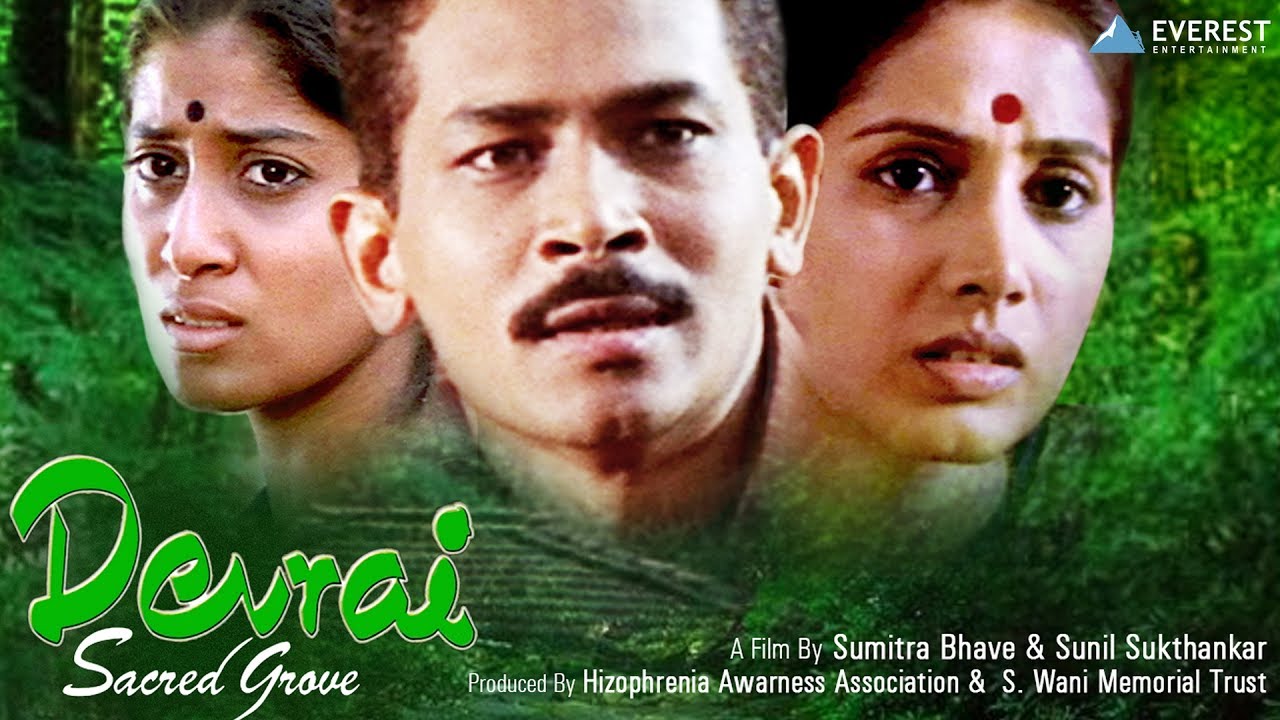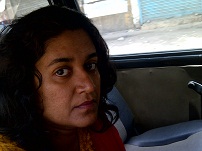Pradnya Mangala
Devrai, a Marathi movie released in 2004, won the best film award for Environmental conservation/ prevention at the 52nd National Film Awards. It also won several other state awards. This movie revolves around life of Shesh Desai, a Brahmin man, who along with his mother, sister, and cousin, lives in the Konkan region of Maharashtra. Desai is an eccentric character who has a special connection with the sacred grove in the forest near his village; he calls it Devrai. He finds solace and peace at Devrai. He believes in the potential of Devrai to protect humankind as Devrai as an ecosystem is essential for the functioning of the planet. Desai wants to do research on Devrai. He studies Environmental Sciences but keeps failing at academics. He is disturbed by the growing urbanization (alienation caused by capitalist economy) and is afraid that Devari will be destroyed. This makes him paranoid and reclusive.
He starts imagining that the servant’s wife who works as a caretaker is a goddess of the sacred grove, and he needs to protect her from her husband, a bahujan man. The husband is represented as some savage who is dark-skinned, of huge build and of an inherently violent nature. The movie portrays all evil that can destroy Devrai through this bahujan man. Later, Desai is diagnosed with schizophrenia. Here the director’s attempt is to sneak into the suffering mind of Desai whose mental illness is caused by the outward circumstances and inability of others to understand his relationship with, and concerns about Devrai. The 52nd National Film awards locates the relevance of the movie “in this chaotic world, when everybody talks about the importance of environment, conservation and preservation but nobody cares to learn from the wisdom of myth created by our forefathers and create a space for every mind to realize its potential without judging, discriminating or condemning.”
This movie is problematic on so many levels. I am writing about it specifically because of the kind of applause it has received from Environment conservation/prevention community – which is nothing but a bunch of Brahmin/savarnas. Anu Ramdas (2017) writes “as a topic of research, the sacred grove has been in fashion for quite a while now, movies and awards have to complement the industry of taking over bahujan ethos, lands, gods, labor… can’t have the bahujan be anything other than evil in this scenario, no?” This is not just limited to this one movie but represents the state of environmentalism in our country.
Problematising this movie raises a few questions:
1) How can a brahmin man become the protector of scared groves? Especially when, in the name of forest conservation, adivasis are stripped of their land and pushed out of their habitats?
2) Why does a bahujan man become the personification of evil that poses a threat to devrai?
3) How is it possible that a community whose a) livelihood, b) social understanding, and c) way of being depends on nature will be the ones who destroy it?
This discourse of brahmins being the protectors of the nature is very dangerous as it only reinforces their stronghold over the country’s natural resources and legitimizes the dispossession and violence against the adivasi and bahujan communities of India.
References:
https://en.wikipedia.org/wiki/Devrai
~~~
Pradnya Mangala is currently a PhD student at University of Arizona. Her research interest is in human-environment relationship.



